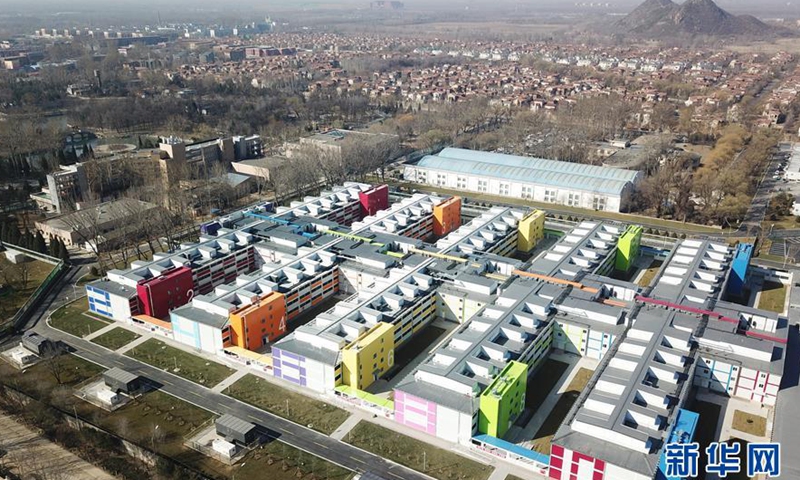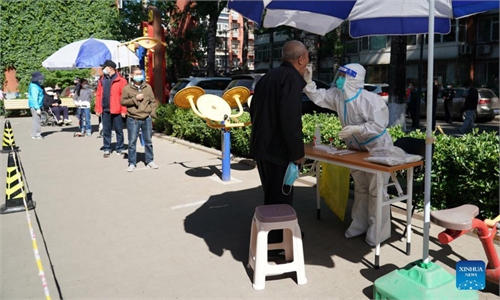Beijing’s Xiaotangshan makeshift hospital put into use for COVID patients amid latest flare-up

Xiaotangshan makeshift hospital Photo: Xinhua
Beijing reopened the Xiaotangshan makeshift hospital on Sunday to treat COVID-19 asymptomatic patients and mild cases and the capital city will launch a further two rounds of mass nucleic acid testing in major districts from May 1 to 4 during the May Day holiday amid the latest Omicron flare-up, local authorities announced on Sunday.The Xiaotangshan makeshift hospital, once used for accommodating SARS patients in 2003 and also used for treating local COVID-19 patients in early 2020, consists of nine isolation units and 1200 beds.
At present, the first isolation unit has been activated, and a total of 40 medical workers, including eight doctors, 30 nurses and two epidemic control specialists, have been deployed to the isolation unit, with 12 asymptomatic patients and mild cases already transferred to the facility, Li Ang, deputy director of the Beijing Municipal Health Commission said at a press conference on Sunday.
Moving forward, the hospital will use the remaining isolation units according to the development of the epidemic situation, and select medical staff from 19 municipal hospitals to assist with treatment in the hospital, Li said.
Beijing's COVID19 prevention and control effort is at its most critical stage, with a small number of new infections still found in local communities. The number of new cases is still at a high level, Pang Xinghuo, deputy head of the Beijing municipal disease prevention and control center, said at the same press conference.
The capital city recorded another 55 infections (51 confirmed cases and four asymptomatic patients) between Saturday afternoon and Sunday afternoon, among which 20 were from Chaoyang district, 14 from Fangshan, eight from Tongzhou, with the remainder across six districts, according to the press conference. In total, 52 of the infections were found among personnel under quarantine.
Beijing has reported a total of 350 COVID-19 cases in 14 districts since April 22.
Gyms and other in-door sports activities will be suspended during the May Day holidays, officials announced on Sunday. It followed announcements on Saturday that a negative nucleic acid test result is required to enter public venues during the Labor Day holiday.
Parks, open venues for entertainment and cultural activities will cap the number of visitors at half of the maximum flow during the holiday.
The city government also requires people who enter public places or take public transport to hold a negative nucleic acid test within seven days starting from May 5.
So far, Beijing has sequenced 158 locally infected cases since April 22, and sequence comparisons indicate that there are two independent transmission chains in the city, both of which are identical with the sequence of the recent epidemic outside Beijing.
The city flagged another high-risk area, in addition to six areas classified as medium-risk . Beijing now has seven high-risk areas and 28 medium-risk areas.
Global Times

